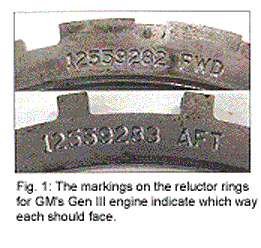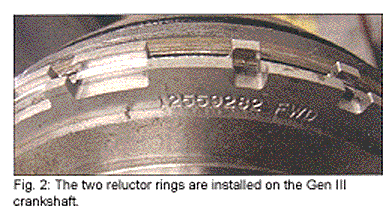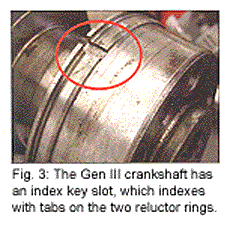This Core Corner is all about rings. It’s amazing how much they are a part of our lives. Of course, a symbol of commitment between married couples is probably the first that comes to mind.
Type the word “ring” in the Google search engine and get beyond all the stuff that is being sold and you will be amazed at how many occurrences there are. It is mind boggling. There is even a site that monitors and archives data relevant to planetary rings.
You can’t talk about rings and not mention the Olympic rings, which stand for the coming together of five continents; I’d like to see that.
I started thinking about all the places that rings are used in an engine. Piston rings, ring gears, snap rings, “O” rings, ring grooves, ring lands and of course reluctor rings, that provide a signal for the firing event. If you’re not already aware of this information, it is interesting to know that nearly all of today’s engines control spark timing based upon increase and decrease of crankshaft rotation speed, not by vacuum and distributor curve advance springs.
Today, each time a spark plug fires there is an instantaneous increase of crank speed. It’s an “every action has an equal and opposite reaction” kind of thing. That is what the sensor detects from the crankshaft reluctor ring, whose signal information is processed by the ECM. Spark timing is then altered based upon a large collection of sensor data according to each nanosecond of conditions.
Hence on initial start up the “learn” process must occur, to alter spark based upon correct crankshaft increase and decrease of rotational speed at the correct moment in time. At that point all is right with the world of combustion.
That said, we have a GM engine application we should start to talk about; the 8.1L big block came on line in 2001 and was used as a V10 beater and/or diesel alternative in HD trucks, vans and commercial or personal busses. Production numbers are now approaching one-half million so we are going to start to see them.
This engine has the same valve and bore centers as the familiar 7.4L but a 3.7″ longer stroke. Funny, quarter-inch big block strokers have been built forever by many performance enthusiasts but a 3/8″ stroker was only for those who were real serious and with deeper pockets. Now you get that behemoth configuration right out of the box from GM. Talk about progress!

One of the primary differences of this “Big Rat Motor” is a new firing order of 1-8-7-2-6-5-4-3 which gives that perfect crankshaft increase and decrease speed ratio and that is finally what I want to make you aware of. Previous Gen III articles should have you prepared for what I am about to show you: the reluctor rings.
That’s right, there are two of them. The Gen III crank has two pieces spot-welded together while the 8.1L has two separate pieces as you can see in Figure 1.

Each ring is clearly marked FWD for forward (or to the front of the engine) and AFT (or to the rear of the engine). I’m thinking that the engineer involved must have had some naval experience.
Figure 2 shows the two rings installed on the crankshaft. Now for the best part: in Figure 3 you can see that there is an index key slot, which indexes with tabs on the two reluctor rings.
I haven’t seen any procedures for installation and assume that we won’t because it is presently considered a non-serviceable part, which is the same way the Gen III started. I would
recommend heating them to 350° F to allow them to fall on the back of the crankshaft. I would also find an old cylinder sleeve or similar thing to do that bottoming ricochet tap with a hammer. To date I have only found one resource for these rings: Precision Diversified, Detroit, MI. I also want to thank to Larry Eriksson, Crankshaft Rebuilders and Chip Helderman, Jasper Engines, for their help with this column.
I want to personally invite you to attend the AERA Expo in Las Vegas, April 28-30, and come and see me in Booth 704 where I will be personally demonstrating EngineDataSource.com live. Come roll the dice and I guarantee that you won’t end up with craps.
For technical questions, contact the Production Engine Remanufacturers Association (PERA) at: [email protected]













